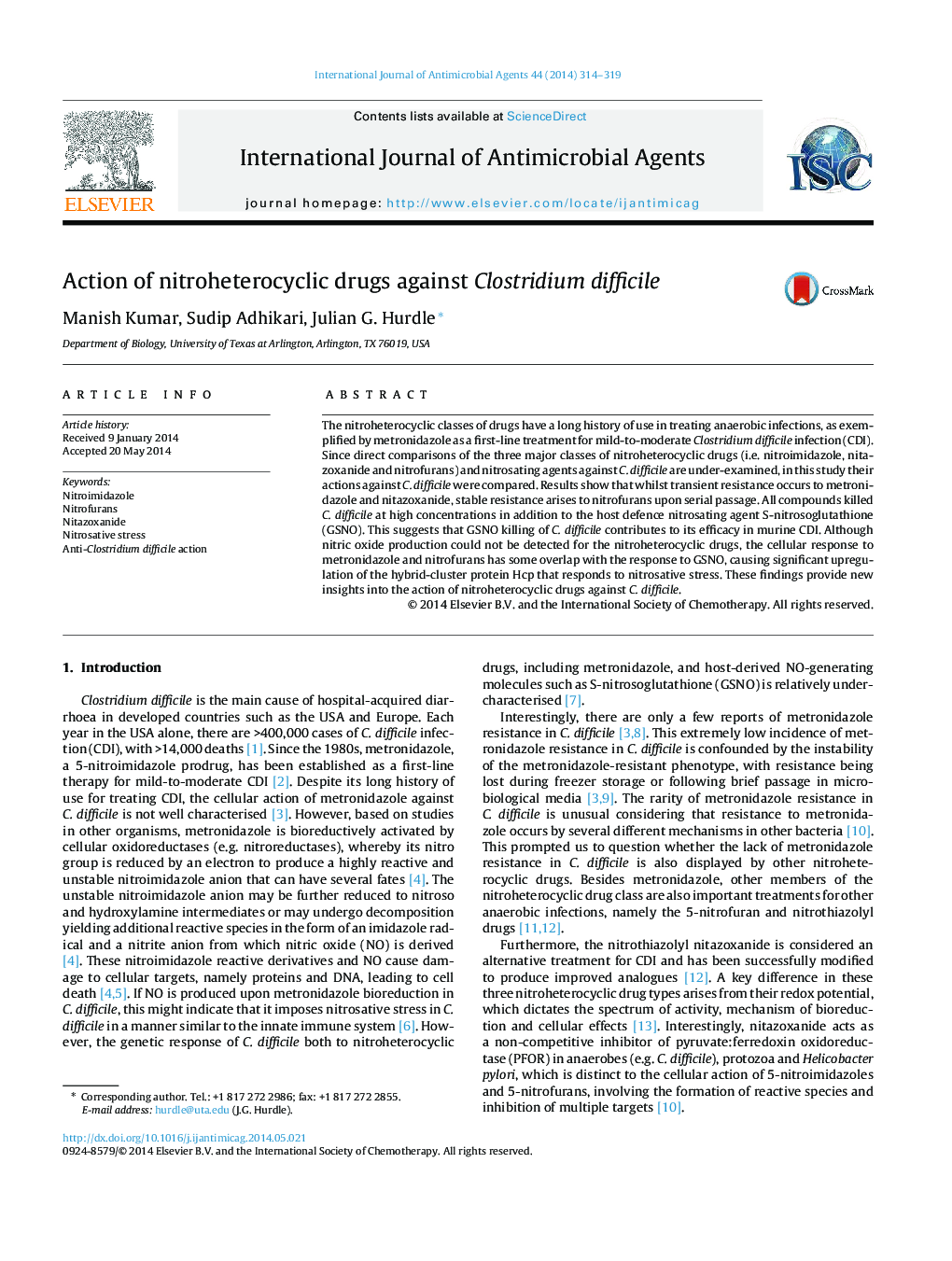| Article ID | Journal | Published Year | Pages | File Type |
|---|---|---|---|---|
| 6117914 | International Journal of Antimicrobial Agents | 2014 | 6 Pages |
Abstract
The nitroheterocyclic classes of drugs have a long history of use in treating anaerobic infections, as exemplified by metronidazole as a first-line treatment for mild-to-moderate Clostridium difficile infection (CDI). Since direct comparisons of the three major classes of nitroheterocyclic drugs (i.e. nitroimidazole, nitazoxanide and nitrofurans) and nitrosating agents against C. difficile are under-examined, in this study their actions against C. difficile were compared. Results show that whilst transient resistance occurs to metronidazole and nitazoxanide, stable resistance arises to nitrofurans upon serial passage. All compounds killed C. difficile at high concentrations in addition to the host defence nitrosating agent S-nitrosoglutathione (GSNO). This suggests that GSNO killing of C. difficile contributes to its efficacy in murine CDI. Although nitric oxide production could not be detected for the nitroheterocyclic drugs, the cellular response to metronidazole and nitrofurans has some overlap with the response to GSNO, causing significant upregulation of the hybrid-cluster protein Hcp that responds to nitrosative stress. These findings provide new insights into the action of nitroheterocyclic drugs against C. difficile.
Related Topics
Life Sciences
Immunology and Microbiology
Applied Microbiology and Biotechnology
Authors
Manish Kumar, Sudip Adhikari, Julian G. Hurdle,
